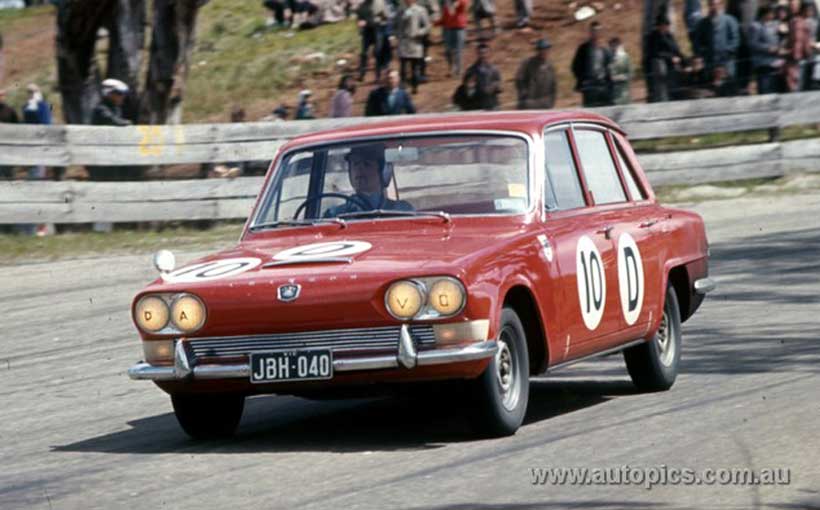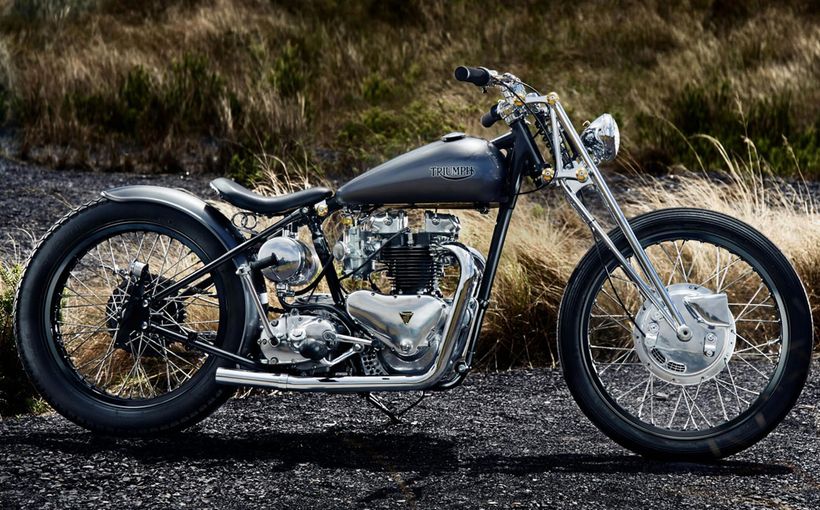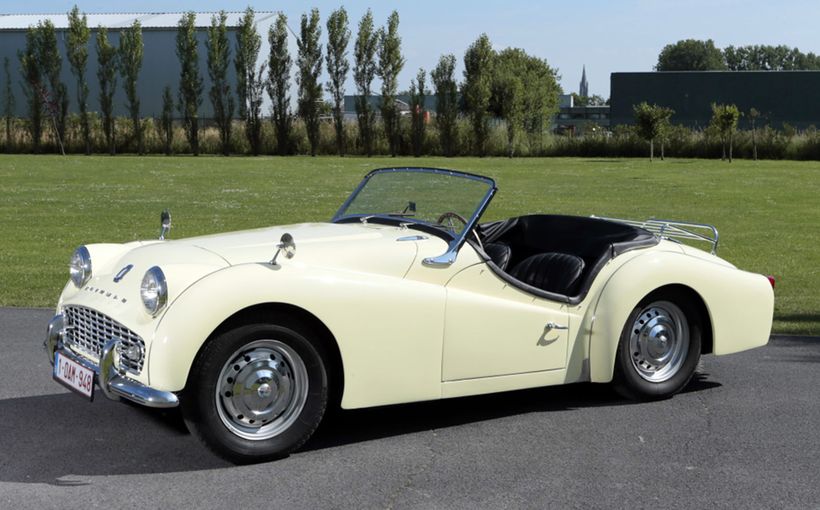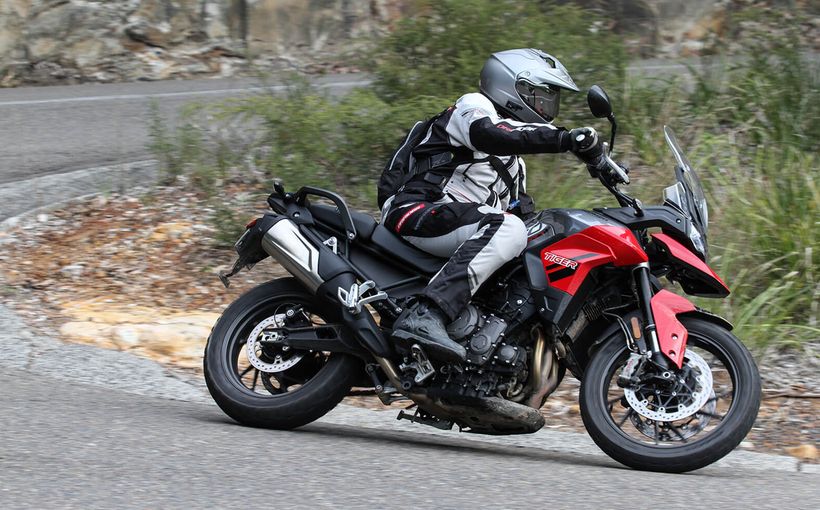Triumph 2000/2.5 PI: From Mount Panorama to Mexico City

The Triumph 2000/2.5 PI sedan was a large, rugged and spirited performer, well suited to rallying in the 1960s. Its long career as a factory entrant on the international rally stage commenced in 1964 with the 2000 Mk I and culminated with the 2.5 PI Mk II’s exceptional performance in the 1970 London-Mexico World Cup Rally.
The ‘big’ Triumph had many of the right ingredients for endurance events. Its strong unitary body shell was equipped with supple four-wheel independent suspension, front disc brakes and rack and pinion steering. This provided an excellent platform for the base 2.0 litre and PI’s larger 2.5 litre fuel-injected inline sixes and their four-speed overdrive manual gearboxes.
It also competed for several years in the annual 500-mile (800 km) Bathurst endurance race at Mount Panorama, when the event catered for showroom stock production cars. Fittingly, the 2.5 PI Mk II model represented the British marque in the rorty sedan’s final Bathurst appearance in the 1970 Hardie-Ferodo 500.

1964 Armstrong 500
The Triumph 2000 made its Bathurst debut in 1964. With four competing classes based on retail prices, the British sedan was well represented in the most expensive Class D (?1,201-2000) with four entries pitched against other high-priced imports like the V8-powered Studebaker Lark, Ford’s six cylinder-powered Zephyr Mk III and Citroen’s ID19.
Two of the Triumphs were considered ‘works’ entries with backing from local assemblers AMI. One was earmarked for four-time AGP winner Lex Davison and his young protégé Rocky Tresise, which on reflection was a rather haunting combination given that both drivers would tragically lose their lives in racing cars within nine days of each other in the early months of 1965.
The other AMI-entered Triumph 2000 was shared by Bob Salter and future open-wheeler star Max Stewart, who had recently taken on the AMI franchise for the sale of Triumph cars at his self-named dealership in the nearby rural township of Orange.
The other two Triumph 2000s were private entries shared by Arthur Davis/Paul Mander and Tony Reynolds/Tony Allen.
In those early days, practice times had no relevance to positions on the starting grid as the race was started in class order - with logically the biggest and most expensive Class D cars starting from the front - and their starting positions were decided by a simple ballot draw.
As a result, two of the new Triumphs had the honour of leading the huge field into the first corner. However, it soon became clear they could not match the V8 grunt of the Studebaker Larks which would set a cracking pace for as long as their feeble drum brakes and skinny steel wheels could hold up.

As it turned out, the Triumphs suffered some mechanical maladies of their own which surfaced after about three hours of racing, when the Stewart/Salter AMI entry rumbled into the pits with loud groans from collapsed wheel bearings.
With repairs to the damaged AMI car taking an agonising 20 laps to complete, the remaining works car being driven with great verve by open-wheeler aces Davison and Tresise was one lap behind the Class D-leading Weldon/Needham Lark and closing.
It was all looking quite promising until Tresise came coasting down Conrod Straight and rolled into pit lane. In his hot pursuit of the class-leading Studebaker, Tresise had arrived at Skyline earlier that lap only to discover he suddenly had no brakes. In his desperation to slow down by stabbing it into a lower gear, the resulting drivetrain shock damaged the clutch.
Showing his legendary fighting spirit, Davison quickly replaced Tresise and with the help of his crew managed to get the car mobile again. Stuck in top gear and with no brakes to speak of, Davison set some remarkably quick times in his attempt to salvage the best result for the team.
Bob Jane/George Reynolds in a Cortina GT was the first crew to complete the 130-lap distance, leading home two more Cortinas in a 1-2-3 Ford clean sweep of Class C and outright race honours.
In Class D, the Larks finished 1-2 with the highest placed Triumph 2000 being the Davis/Mander entry that claimed fifth in class, five laps behind the winning Weldon/Needham Lark. The other Triumphs came home eighth (Davison/Tresise), ninth (Reynolds/Allen) and 10th (Stewart/Salter).

1965 Armstrong 500
The Triumph 2000 attack returned for the 1965 Armstrong 500, albeit with half the number of entries. Once again the British sedan found itself in the most expensive of the four competing divisions (Class D) for cars ?1,301- ?2000.
One was again a factory-backed AMI entry for Orange Triumph dealer Max Stewart and co-driver Bob Young, with the other privately-entered car driven by Keith Russell and Colin Wear.
Class D was well subscribed with 17 entries, which in addition to the two Triumphs featured a pair of Studebaker Larks, two Volvo 122S sedans and a lone Fiat 2300. Unfortunately for these hopefuls, the remaining 10 entries were filled by Ford’s first ‘Bathurst special’ - the Cortina GT 500 - which with its huge fuel capacity was destined to claim outright victory over the Mini Cooper S that year.
The Triumph 2000’s 1965 Bathurst campaign was cut to a single-car effort after only 60 of the 130 laps when the Russell/Wear entry got it all wrong on top of The Mountain and rolled spectacularly in the Esses.
Fortunately the surviving AMI-entered car was not suffering the chronic wheel bearing problems that crippled its Bathurst debut the previous year. Although it could not match the outright speed of the Cortinas, which won the race outright and finished 1-2-3 in Class D, the Stewart/Young Triumph was easily the best of the rest claiming fourth in class and 10th outright.

1966 Gallaher 500
There was only one Triumph 2000 on the grid for the 1966 Bathurst classic, entered again by AMI for the 1965 driver pairing of Max Stewart and Bob Young.
It was a period of great change at Bathurst, with shock absorber manufacturer Armstrong being replaced by Irish tobacco company Gallaher as the event’s naming rights sponsor. And Australia’s recent switch from imperial to decimal currency had also required a change in the four competing classes from being based on prices in pounds, shilling and pence to the new dollars and cents.
One thing that didn’t change, though, was the Triumph 2000’s presence in Class D, reserved for the race’s most expensive cars costing $2,701-$4,000. Keeping the British sedan company this year were examples of the latest Holden X2, Studebaker Lark, Volvo 122S and the latest VC Valiant V8 sedans.
As expected the power-packed Valiants set the pace in Class D, finishing first and second in class and 10th and 11th outright behind a swarm of Mini Cooper S’s which dominated both the Class C and outright battles that year.
The lone AMI-backed Triumph 2000 again proved to be the best of the rest by finishing third in class behind the two Valiants, despite having an engine less than half the capacity.
Reliability and consistency had quickly become hallmarks of the Triumph 2000 at Bathurst but its competitiveness was diminishing each year. Stewart and Young finished four laps behind the Class D-winning Valiant V8 and 10 laps behind the Bob Holden/Rauno Aaltonen Mini Cooper S which won the race outright.

1967 Gallaher 500
Although a sole example of the venerable Triumph 2000 was again on the starting grid for the 1967 Gallaher 500, its days as a remote threat for class honours were clearly at an end with the arrival of Ford’s thundering V8-powered XR Falcon GT.
With the usual four competing classes based on retail prices expanded to five for the first time, to accommodate Australia’s rapidly changing automotive landscape, the lone Triumph’s cosy position in Class D (now for cars costing $3,001 - $4,100) was shattered by the arrival of Ford’s home-grown muscle car.
XR GTs filled seven of the 12 entries, with the remainder represented by the Triumph 2000, Studebaker Lark, Volvo 122S, Audi Super 90 and Alfa Guilia Super. It was hardly a fair fight!
This year the lone Triumph was shared by Bob Young and new signing Bob Sorrensen, who stepped in for regular driver Max Stewart after he was recruited by Alfa Romeo importer Alec Mildren to partner Doug Chivas in a works-backed 1600 GTV.
As expected Ford’s new muscle cars finished 1-2 outright and also ran away with Class D, finishing six laps ahead of the third-placed Studebaker Lark which had long passed its use-by date, as a new age muscle car war was soon to erupt between Ford and GM-H.
The humble Triumph 2000 had another reliable run but was totally outgunned in finishing ninth in Class D and 22nd outright, 13 laps behind the outright and class-winning Harry Firth/Fred Gibson XR GT. It was the last time a Triumph 2000 would be seen in the Bathurst 500.

1970 Hardie-Ferodo 500
After missing the 1968 and 1968 events, the famous Triumph brand was again represented on the Bathurst grid in 1970. During Triumph’s absence, the Great Race had seen another change of naming rights sponsor from Gallaher to friction materials manufacturing giant Hardie-Ferodo.
The tried and tested Triumph 2000 Mk I sedan had also been replaced by the latest Mk II range in 1969. Earlier that year, a multi-car team of factory-prepared 2.5 PI sedans had represented British Leyland Motor Corporation (BLMC) in the gruelling 1970 London-Mexico World Cup Rally (see separate story). And closer to home, Lyndon McLeod and long distance rally ace Ken Tubman had driven one to a top 20 finish in the 10,000 km 1970 Ampol Trial held in July.
So it was perhaps not surprising to see the latest 2.5 PI Mk II model also having a crack at the Bathurst 500 that year. In fact, it was the same car that Tubman and McLeod had driven in the Ampol Trial only a few months before, with Tubman replaced by Briton Brian Culcheth who had driven so brilliantly for Triumph in the World Cup event.
For 1970, the venerable six cylinder British sedan was once again competing for Class D honours, which now catered for cars costing $3,151-$4,100.
Short-odds favourite for a class win - and a long-odds chance of outright victory - was Chrysler’s new VG Valiant Pacer 4BBL with a big four-barrel carburettor feeding its hot Hemi six. The Class D entry list was dominated by the new Mopar muscle cars, with only the Culcheth/McLeod Triumph 2.5 PI and a lone Fiat 125S to keep them company.

As expected, come race start the four-barrel Pacers rocketed into the distance. The top works entry driven by Des West and Peter Brown built a massive lead on its way to seventh outright (it led the race outright at one stage) and a convincing Class D victory, ahead of another privately-entered Pacer 4BBL.
Although running reliably enough, the Triumph 2.5 PI clearly had no answer to the blistering speed of the Hemi Pacers. It was also forced into the pits during the afternoon with some badly warped front disc brake rotors. Rather than try to change them, it was decided to re-join the race and drive at a lower speed to make the finish.
The lone 2.5 PI came fourth in Class D - a whopping 17 laps behind the class-winning Pacer and 19 laps down on Allan Moffat’s outright-winning XW Falcon GT-HO. Not surprisingly, the 2.5 PI did not return to the Mountain and it would be another six years before the British marque returned as another class contender, this time in the form of Triumph’s new Dolomite Sprint.

1970 London-Mexico World Cup Rally: they only remember the winner
Given the British Leyland Motor Corporation’s (BLMC) narrow loss in the 1968 London-Sydney Marathon with its fleet of works-prepared Austin 1800s, it was no surprise when the proudly British automotive giant announced that it was backing a similar well-planned attack on the 1970 London-Mexico World Cup Rally. Only this time it would be fielding a fleet of the latest Triumph 2.5 PI Mk II sedans.
This mammoth event, which would cover more than 25,000 kms in six weeks through Europe, South America and Central America, is widely revered as the toughest post-war car rally of all time. The 1968 London-Sydney was only 16,000 kms.
Conceived as the ultimate test of man and machine, the event was the brainchild of lateral-thinking organiser Wylton Dickson to promote the link between London’s hosting of the 1966 FIFA World Cup and the upcoming 1970 FIFA World Cup to be held in Mexico.
Two ships were required to convey the rally; one to cross the Atlantic Ocean from Lisbon in Portugal to Rio de Janeiro in Brazil and the other to cross the Gulf of Panama in the final leg north to the finish in Mexico City. It was a massive event that captured the world’s imagination.
BLMC had good reasons to feel optimistic about winning it, given the superb preparation and planning shown by its legendary Competitions Department in the 1968 London-Sydney. And the quality of its star-studded lead driver squad, which included London-Sydney winner Andrew Cowan, runner-up Paddy Hopkirk, British rally ace Brian Culcheth and talented Aussie journalist/driver Evan Green.
According to the Triumph 2000 Register, when extensive vehicle research and development work was completed construction commenced on four new 2.5 PI Mk II sedans which were to be BLMC’s official entries in the World Cup Rally:
|
UK rego |
No. |
Crew |
|
XJB 302H |
98 |
Paddy Hopkirk/Tony Nash/Neville Johnston |
|
XJB 303H |
92 |
Evan Green/Jack Murray/Hamish Cardno |
|
XJB 304H |
43 |
Andrew Cowan/Brian Coyle/Uldarico Ossio |
|
XJB 305H |
88 |
Brian Culcheth/Johnston Syer |

These cars were literally hand-built, incorporating all the specialised design and construction skills that had made the London-Sydney Austin 1800 works cars such formidable foes.
The bodyshells were strengthened, robust underfloor protection was added and some body panels were re-stamped from lightweight aluminium to reduce weight. Further reductions came from the use of Minilite 15-inch magnesium wheels, offset somewhat by the installation of large boot-mounted twin fuel tanks to cope with competitive special stages that would stretch to more than 800 kms.
The engines were built to the same specification as Triumph’s TR6 PI sports car, except for lower compression ratios to cope with the indifferent fuel quality expected during the event. The metering units for the fuel injection systems could also be adjusted from inside the cabin to cope with the extreme altitudes (up to 4,900 metres) of the Andes Mountains in the South American leg.
The overdrive manual gearboxes were built to rugged UK ‘Police’ specification while final drive units (fitted with big Salisbury limited slip diffs) and brakes were sourced from the Triumph Stag parts bin. The BLMC works cars bristled with premium quality design and components and stood an excellent chance of outright victory.
Two more privately entered 2.5 PI Mk IIs would join the four works cars on this harrowing journey.
The Triumphs’ major competition was expected to come from Ford UK with its multi-car entry of Boreham-developed Mk 1 Escorts and the formidable Citroen DS21s.

Corporate expectation weighed heavily on the Triumph squad as they left the start at London’s Wembley Stadium on April 19, waved away by BLMC Chairman Lord Stokes.
Fortunately, three of the four works cars arrived in Lisbon many days later strongly placed in the top ten after Culcheth, Hopkirk and Cowan had set a cracking pace through the early European stages which included France, Germany, Austria, Hungary, Yugoslavia, Bulgaria, Italy, Spain and Portugal.
However, Evan Green’s car limped into Lisbon only minutes from disqualification having suffered crippling delays due to a misfiring engine (traced to a broken valve guide) and falling off a narrow pass in the French Alps that he and his crew were lucky to recover from.
The European leg also claimed one of the two privately-entered Triumphs, which was eliminated due to fuel starvation problems.
Following the two-week sea journey from Lisbon to Rio de Janeiro, the field set off for the final 14, 400 km leg through South America and Central America to the finish in Mexico City. The vast distances and rugged terrain of the Americas were brutal on cars and equipment, including the Triumphs which all struck trouble.

The second of the privately-entered cars withdrew in Brazil due to damaged front suspension, followed by Evan Green’s trouble-plagued works car which retired with engine failure in Argentina. The highly fancied Andrew Cowan suffered a frightening high-speed crash which destroyed his works Triumph and left all three crew members requiring hospital treatment.
Hopkirk’s car suffered differential problems in Bolivia while Culcheth’s progress was hampered by a broken windscreen. Hopkirk also left the road in Columbia, yet both cars were still in outright contention as the rapidly depleting field started the final leg north through Panama and Mexico.
Despite their outstanding efforts, the works Triumphs were to be denied victory by the brilliant Hannu Mikkola and co-driver Gunnar Palm in their works Ford Escort. Culcheth finished a fighting second outright with team-mate Hopkirk fourth when the mammoth event finished on May 27 in Mexico City.

The BLMC Triumph 2.5 PIs had pulled off a commendable top-five performance in the world’s toughest car rally, given that only 23 of more than 100 starters managed to reach the finish line.
Even so, the result failed to impress Lord Stokes and his BLMC directors who apparently expected nothing less than an emphatic victory to justify the enormous expense involved. The official response from the boardroom several months’ later was swift and brutal. In October 1970, the British Leyland Competitions Department was shut down.
Although Brian Culcheth continued to privately campaign his ex-World Cup 2.5 PI in selected events, which included a class win in 1972 East African Safari, the big Triumph’s glory days as an international rally weapon were behind it.
Protect your Triumph. Call Shannons Insurance on 13 46 46 to get a quote today.









